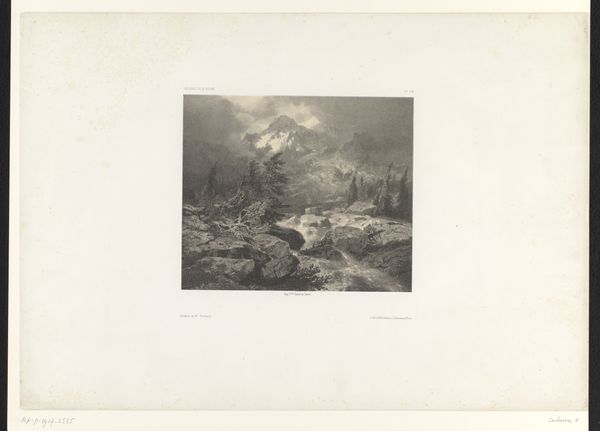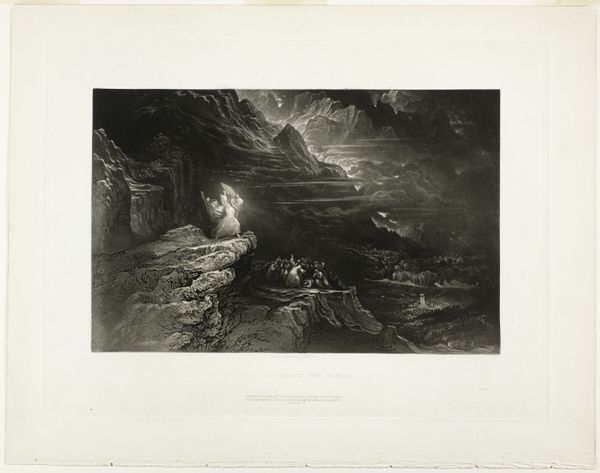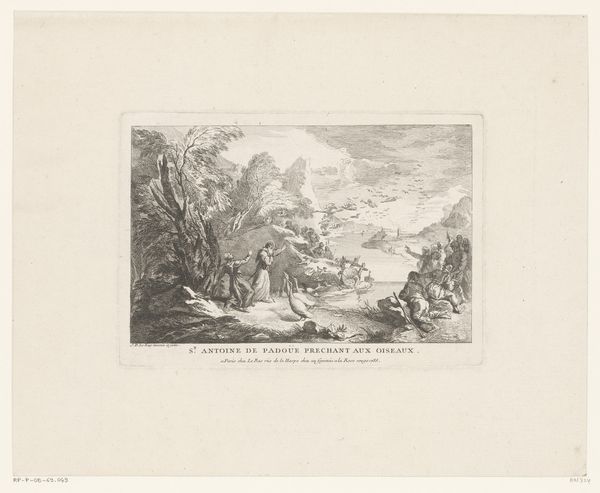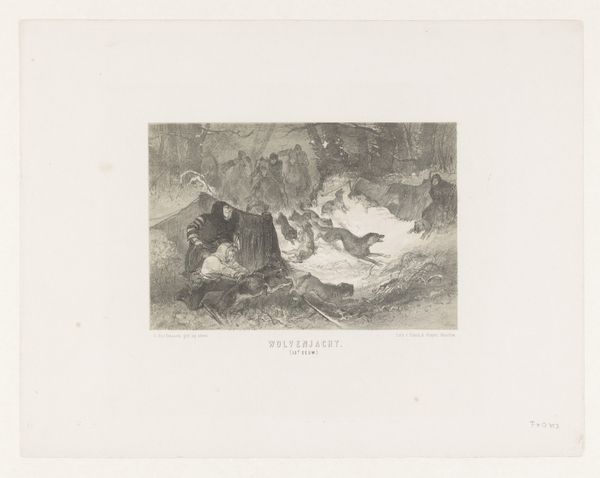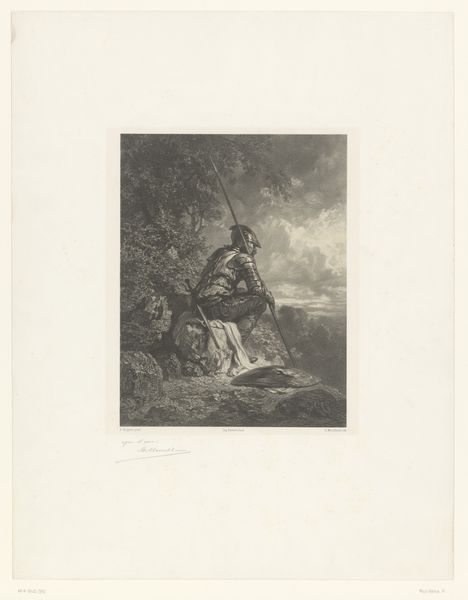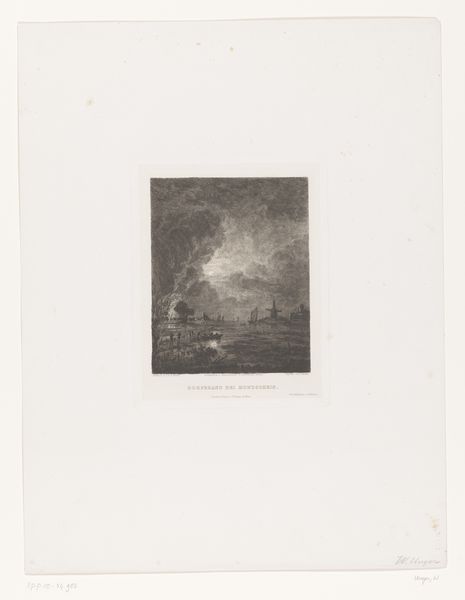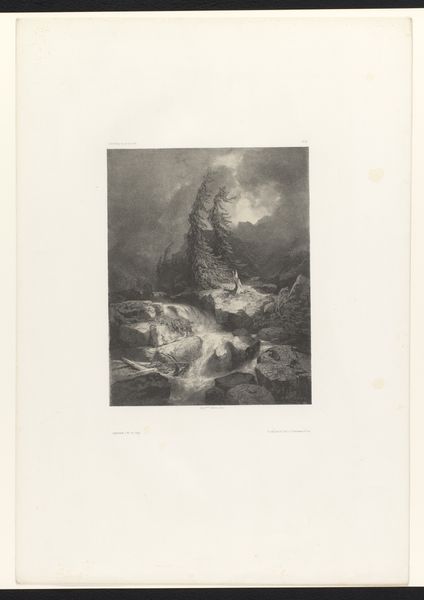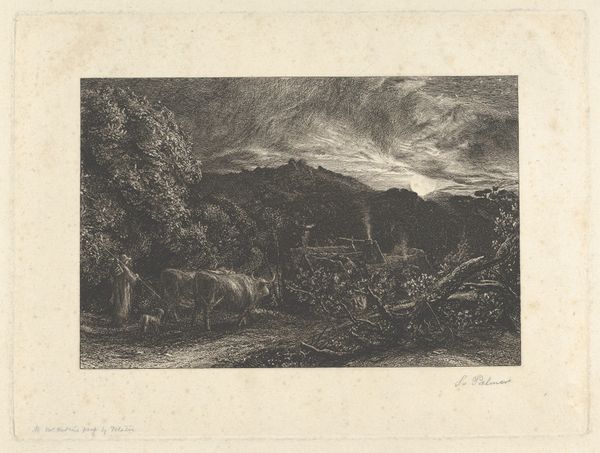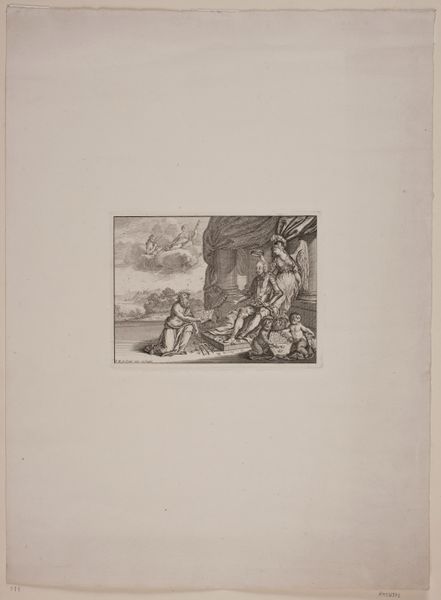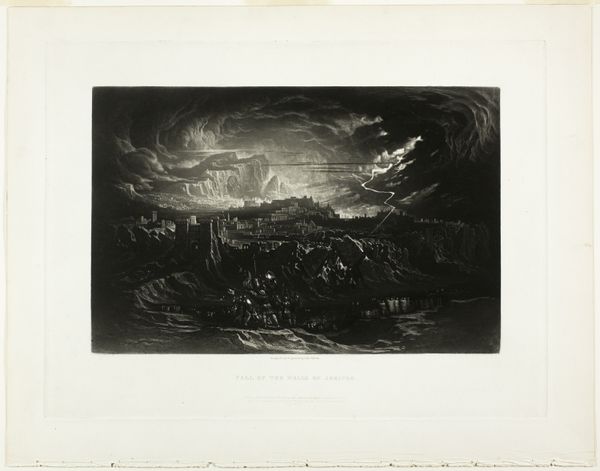
drawing, print, etching, paper, engraving
#
drawing
# print
#
etching
#
landscape
#
paper
#
romanticism
#
history-painting
#
charcoal
#
engraving
Dimensions: 175 × 254 mm (plate); 372 × 528 mm (sheet)
Copyright: Public Domain
Editor: This is "Christ Tempted in the Wilderness," an 1824 etching and engraving by John Martin, now at the Art Institute of Chicago. The dramatic landscape is quite striking. What can you tell me about this work? Curator: Martin often used dramatic landscapes to frame his subjects. Consider the social and religious context. The early 19th century was a time of both fervent religious belief and growing secularism. Artists like Martin negotiated these tensions, presenting biblical scenes in ways that both reinforced and questioned traditional faith. Note how the overwhelming scale of the wilderness diminishes the figures, even Christ and the Tempter. Is this a celebration of divine power or an acknowledgement of humanity's vulnerability within the vastness of creation? Editor: It feels a bit like both, actually. The sheer scale makes it intimidating, yet the detail invites contemplation. Was there something particular about showing religious scenes as landscapes at the time? Curator: The Romantic movement, gaining prominence, emphasized the sublime power of nature. Landscapes became a vehicle for exploring emotional and spiritual states. The focus shifts from dogma to personal interpretation and experience. These history-paintings gave way to a fascination with historical or literary scenes. The institutions of art like the Royal Academy and the art market drove such subject matter for public consumption. The wilderness in Martin's etching can then be seen as representing an inner turmoil. It also becomes less about the event of the temptation and more about the subjective response that one is intended to have. How might viewers in the 1820s have interpreted this landscape in relation to their own lives? Editor: That's fascinating – it makes you think about how art reflects society's changing values. Curator: Indeed. And how museums today continue to shape our understanding of these historical dialogues. I wonder how Martin might respond to seeing his work here. Editor: This really deepened my appreciation of how context influences the art itself. Thanks for your insights.
Comments
No comments
Be the first to comment and join the conversation on the ultimate creative platform.
